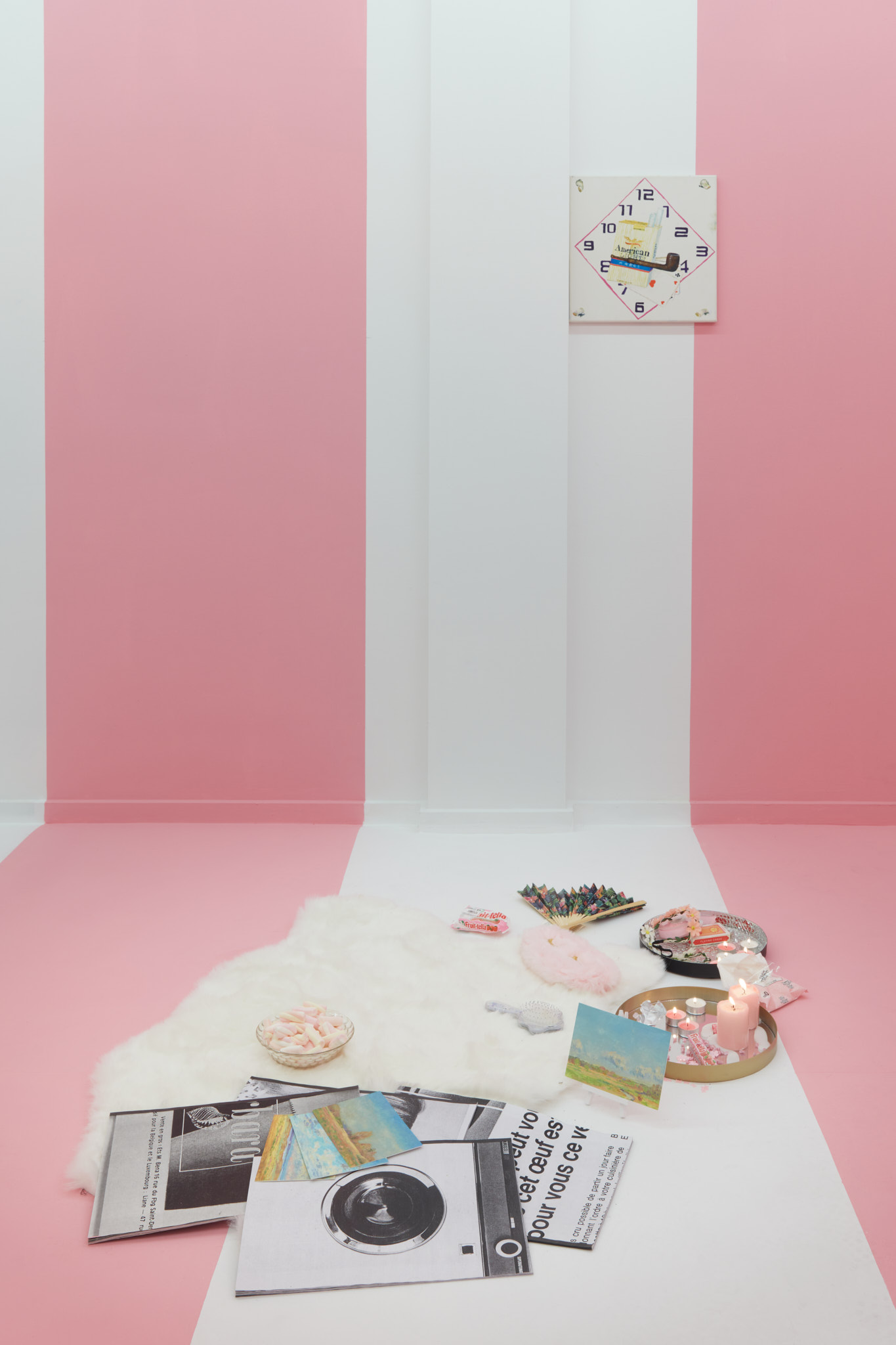"In Heaven Everything is Fine" / Christoph Blawert
17 September – 30 October, 2021
TICK TACK
Mechelsesteenweg 247,
2018 Antwerp









Images courtesy of the artist and TICK TACK, Antwerp
Christoph Blawert’s painterly practice is an intoxicating mise en
scene of painting references, history, and styles, characterized by an ambiguity that is infused with equal parts absurdity and poetry.
Blawert plays with symbolically charging images and the attributions
that pervade them. His work takes an eclectic range of motifs from
across the board of modern painting and juxtaposes them against
motifs from film, theatre, magazines, pulp fiction, and advertising.
Doing so, it inverts the images’ representative function and
challenges the arthistorical order: Blawert portrays Paul Gauguin and
Vincent van Gogh, articulated in firered, expressionist brushstrokes,
eating beans; his historical portrait of Napoleon depicts him casually
smoking a cigarette; a tranquil landscape in the impressionist style is titled Hinterm Sportplatz (‘Behind the sports ground’). These are
just a few examples of his exceedingly productive practice. Blawert
stage-manages the representative character of painting on the brink
of triviality, eschewing neither kitsch nor clichés in his practice of
bringing the inconsistencies of contemporary image creation into the
realm of the visible.
Accordingly, Blawert’s practice is not confined to work on canvas.
His exhibitions are theatre-like scenarios that consistently challenge
the order of the institutional space by reinterpreting its representative
features. In Blawert’s shows, foyers become bars, offices become
foyers, toilets are exhibition spaces and exhibition spaces are stuffy
bachelor pads. Blawert invites visitors to view his works through
spyholes on doors and shows exhibitions in hotel rooms and bars. He
has conjured his works out of a case on a park bench in Antwerp and
presented them on the beach promenade at Trouville. The deliberate
confusion surrounding art-appropriate spaces he thus causes is not
a demonstrative rejection of established institutional structures, such
as the Neue Wilde propagated in the 1980s. Rather, Blawert’s practice
centers on uncovering the staged quality of spaces that are involved
in the presentation of art. Blawert therefore takes the logical step with
his approach to production, by no means creating works exclusively
in his studio. His latest works are plein air paintings, capturing
landscapes along the Rivers Rhine and Mosel and in the Black Forest in postcard format. Taking on the undeniably unfashionable
genre of outdoor painting, depicting locations that have long since
stopped being tourist magnets and favoring a format that is readily
available in any museum shop, providing the public with countless
reproductions, the artist reiterates his laconic approach to popular
expectations of painterly practice. Blawert moves out of time to hold
up a mirror to our present. He deals with both the dreamy horizons
and their dirty nooks. An important aspect of Blawert’s practice is finding the moments in which ambivalence comes into play, in which
projections and reality drift apart and in which the pretty facade of
our familiar conceptions starts to crumble. His are works dealing with
the male gaze, woman as a highly stylized muse, and lewd depictions
of the female body in painting can also be understood in this context.
These are by no means reproductions of hierarchical motifs but
explorations of the inadequacies – and so the potential for amending
– culturally rooted images.
Blawert’s tendency to see commonly received images not as given
but as malleable material is also evidenced in his films, audio plays,
novels, and collaged picture books, which coexist symbiotically with
his paintings. His movies, made in the analogue way using 16mm film or with a Super 8 aesthetic, recall in their design the films of the
Nouvelle Vague movement. They operate with the lightness of a hand
camera only to let the characters fall, without dreams or obsessions,
ever downwards because the ground under their feet is pulled away.
Similarly, the characters in his novels and audio plays, with titles that sound like pulp fiction themes, grope, and stumble their way
through their stories. The impossibility of proving themselves like
heroes is inscribed in all of them. Blawert publishes his stories and
picture collections in small editions of self-produced volumes that
encapsulate the diversity of his practice in all its various formats.
Blawert’s practice is one that does not simply play the role of rule-
breaking and is not afraid to look in the abyss if it can expose the
stage-managing going on behind the curtain. And perhaps the most
brazenly irreverent aspect of his work is its tendency to relativize all
forms of obligation and conformity and so exude an unruffled sense
of freedom.
- Text by Nadine Dorste
Translation by Charlotte Kreutzmller




























